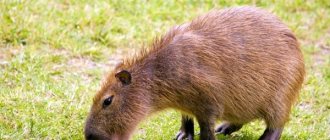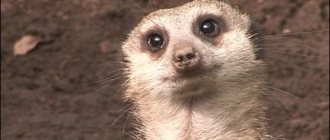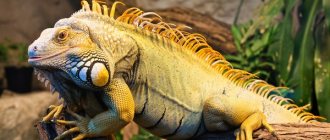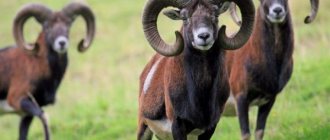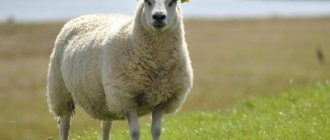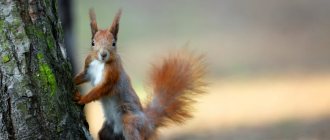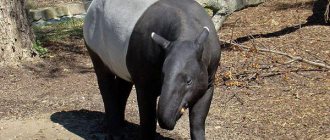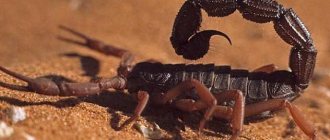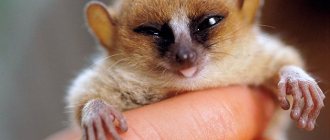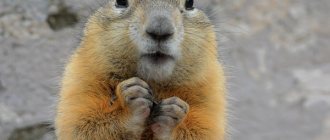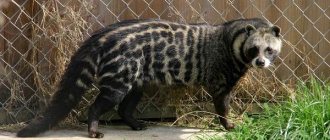- Wild animals
- >>
- Reptiles
The gecko is a small lizard that lives in subtropical and tropical regions. She has amazing limbs. The animal's paws are covered with many hairs, thanks to which the lizard can walk on vertical surfaces, such as walls, window panes and even the ceiling. There are a large variety of geckos. They differ from each other in color, size and body structure.
Origin of the species and description
Photo: Gecko
Strictly speaking, a gecko is not a separate species, but a common name for all representatives of the gecko family or, as they are also called, clasps. In total, the family consists of 57 genera and 1121 species. The most famous of these is the genus Gekko, or True Gecko, which includes 50 species.
Video: Gecko
The name comes from the Malay language, in which these lizards were called "Gek-ko", an onomatopoeic cry of one of the species. Geckos come in different shapes, colors and sizes. Among the species of these lizards, the most famous are:
- Toki the gecko;
- half-toed gecko;
- leaf-tailed;
- spotted leopard gecko;
- comb-toed;
- thin-toed;
- broad-tailed felsuma;
- Madagascar;
- squeaky;
- steppe.
Geckos have a fairly ancient origin, as evidenced by their anatomical structure. Particularly primitive are leopard geckos, which can be considered the most ancient of modern geckos. They are characterized by unpaired parietal bones and anterior concave (procoel) vertebrae.
They also have widened collarbones with holes on the inner sides. Sometimes paleontologists find fossil geckos that are tens of millions of years old. Also, the supposed ancestors of modern geckos and chameleons were found in amber in Southeast Asia. According to preliminary estimates, they are about 99 million years old.
A common distinguishing feature of all geckos is the structure of their limbs. The legs of reptiles end in feet with five evenly spread toes. On the inside they have small ridges consisting of very fine hairs or bristles, approximately 100 nanometers in diameter, and with triangular tips.
It is they that allow the animal to attach to any surface, including a completely smooth one, due to the forces of intermolecular interaction - van der Waals forces. Unsticking occurs due to changes in the angle of individual hairs. The gecko is capable of sticking and unsticking the same finger up to 15 times per second.
Interesting fact: due to the “super stickiness” of its paws, a gecko weighing only 50 g can hold objects up to 2 kg with its paws, that is, 40 times heavier than the gecko itself. To catch a gecko, scientists usually use a water gun, since when wet, the gecko is unable to cling to the surface and escape.
Mr. Tail recommends: varieties
The Gecko family includes more than a thousand species. When looking for a lizard for home keeping, it is recommended to choose from those listed in the table:
| Name | a brief description of |
| Mediterranean | The body length of males is about 4.5 cm; females can grow 0.5 cm longer. The upper part of the body is gray or light brown. There are black stripes across the body in the shape of the letter M. Strong flattening of the head and body. |
| Broad-tailed felsuma | The body of adult geckos is from 10 to 13 cm in length. They are capable of changing color from light green to green with a hint of yellow. There are 2 red stripes on the head, and 3 large red areas on the part of the body closer to the tail. |
| Madagascar daytime | It has a light or rich green color. The body length in males can be 30 cm, in females it can be several cm less. The nostrils are red, and there are stripes of the same color on the muzzle. There are red stripes near the tail. |
| Flat-tailed | Geckos come in a variety of colors, from brown and gray to green and orange. There is a white stripe under the eyes. The length of adult reptiles is 10-14 cm. The tail can make up up to 50% of the entire body. |
| Yellowhead dwarf | Reptiles grow no more than 9 cm. Body color is gray or deep blue with a sharp transition to yellow and dark stripes near the head. In females the transition is less contrasting than in males. |
| Spadetail | The body is strongly compacted, and there are scalloped outgrowths on the tail. Thanks to the fringed longitudinal fold, it can cover long distances in a jump. The body is gray with black and white patterns. |
| Indian (viper) | An adult specimen is no more than 10 cm long. The body is decorated with gray-brown stripes with small light spots, and the tail is thick and carrot-shaped. |
| Skink | Banana or light green body up to 20 cm in size. Several dark stripes run along the back and sides of the body. The belly is light yellow. Characterized by thin skin. |
| Feline | Individuals are dark brown with a small amount of red. Triangle-shaped muzzle, enlarged black eyes. They grow within 10-17 cm. The fingers are elongated and have claws. Increased body flexibility. |
| Central Asian | Light red body with dark spots from head to tail. The limbs are duller in comparison with the rest of the body. Large paws have claws. |
| Ciliated Baneater | Adult geckos grow up to 12-20 cm. The head is triangular, together with the body it is strongly flattened. The color can be beige or rich brown, and there are black stripes on the body. When a tail is lost, the formation of a new one is not observed. Characterized by thick skin. |
| Currents | Weighs up to 300 g with a length of about 36 cm. The upper part of the body is gray or blue with many red and white spots. Characterized by very strong jaws. |
Appearance and features
Photo: Gecko lizard
A common feature of all geckos, apart from their prehensile paws, is that they all have a large head relative to the body, the body itself is flattened but dense, the limbs are short, and the tail is of medium length and thickness. The size of the lizard varies depending on the specific species. For example, the largest Toki species grows up to 36 cm long, and the smallest Virginia large-toed grows to an average of 16–18 mm. An adult weighs only 120 milligrams.
Animal skin is covered with small scales. Among the small scales there are also large fragments scattered chaotically throughout the body. The coloring of reptiles depends greatly on their habitat. Among geckos, there are both representatives of bright green, blue, turquoise, red, orange colors, and camouflaged inconspicuous species that are difficult to distinguish against the background of stones, leaves or sand, especially if the animal does not move. There are both single-colored species and spotted ones, as well as those with varying colors in halftones from one part of the animal’s body to another. Periodically, geckos may molt and eat and eat the fallen pieces of old skin.
Like many other lizards, the gecko has special lines on its tail that allow it to quickly break away if the animal is caught by a predator. The tail may fall off on its own if it is not touched, but the animal has experienced severe stress. After this, a new tail grows over time due to regeneration. An additional feature is that the tail also accumulates reserves of fat and water, which the animal consumes during times of hunger.
Geckos, with the exception of the leopard species, cannot blink. This is due to the fact that their eyelids are fused. But they can clean their eyes with their long tongue. The animals' eyes are greatly enlarged and resemble a cat's in appearance. Pupils dilate in the dark.
Keeping at home
To keep a reptile in captivity, you need to get a terrarium. The vertical house is preferred by species that lead an arboreal life. Lizards living in steppes and deserts need a horizontal reservoir. The terrarium should be closed with a lid, because the creatures are great at climbing walls.
When arranging a home for an animal that loves trees, you need to put thick branches in it. And put stones and small plants in a terrarium for geckos that prefer plains. Every home should have a container of water.
To keep geckos at home you need a terrarium.
In captivity, geckos are fed:
- moth larvae;
- small cockroaches;
- cicadas;
- mealworms;
- crickets.
The daily amount of food depends on the type of reptile. You need to pick them up very carefully, without touching the tail and head, otherwise the animal will cling to your hand and you will have to wait for the grip to loosen. If you touch the tail, the pet will drop it out of fear and become less attractive.
Read more: what do lizards eat in nature and at home.
You should not touch the gecko's tail - the reptile will drop it
Where does the gecko live?
Photo: Gecko animal
The habitat of these reptiles is extensive. Geckos are distributed throughout the world, although most species live in tropical and subtropical zones. Geckos are cold-blooded, so their habitats are those where the ambient temperature does not fall below +20 °C. The normal habitat for them is considered to be from +20 to + 30 degrees, that is, they are quite thermophilic.
Some species can live in mountains or desert areas in the sand, but most prefer river valleys, tropical forests and lead an arboreal lifestyle. In many of their habitats, geckos also settle in villages and even large cities. Moreover, it often begins with people themselves placing them in their homes to get rid of insects, but then their offspring spread on their own. Geckos have realized that the light of lamps is very attractive to nocturnal insects, and they use this to hunt.
Geckos are quite widespread in Southeast Asia, on the islands of Indonesia, on the African mainland, on the island of Madagascar, in Australia, as well as in both Americas. Some reptiles have spread to other continents thanks to humans, for example, the Turkish half-toed gecko spread across Central America after some individuals arrived there with luggage.
Independent spread across the islands is facilitated by the fact that gecko eggs are quite resistant to salty sea water, and can accidentally end up in areas surrounded by water along with logs.
Diet
It is best if leopard geckos eat in the early morning or late evening. This mode is typical in their natural environment, because the leopard gecko is a crepuscular reptile.
The age of the reptile mainly influences how often it needs to be fed. There are average nutritional standards for spotted leopard geckos:
- babies under 2 months are given 1-2 crickets every other day;
- young animals aged 2 to 5 months are offered 4-5 crickets every three days;
- young individuals of 6 months of age are given 5-6 crickets, but once every 4 days;
- grown leopard geckos up to a year are fed once every 4 days, 6-7 crickets per serving;
- Adults should feed every 5 days, eating 7-9 crickets at a time.
If your pet has eaten less food, you should not force him to eat the entire portion offered.
Additional treats should be strictly dosed and not given more than twice a month. The exception is females who are pregnant and have laid eggs.
Baby leopard geckos begin to eat from the third or fourth day of birth.
What does a gecko eat?
Photo: Green gecko
Geckos are predators, so they do not eat plant foods. The main diet of these lizards is insects. Geckos are quite voracious, so whenever possible they try to consume as much food as possible. Their excess fat reserves are deposited in the tail, which is a kind of reservoir. In times of hunger, geckos obtain the necessary energy from reserves in their tail. Geckos readily drink dew as a liquid. Reptiles are unpretentious when it comes to food, so their food is quite varied.
The typical diet of geckos is:
- various midges;
- worms;
- insect larvae;
- cicadas;
- butterfly caterpillars;
- small arthropods;
- cockroaches.
Less commonly, geckos can eat frogs, small mice, bird eggs (and sometimes even chicks), but this is typical only for large reptiles. Some of them can even eat scorpions. Hunting usually happens as follows. The gecko sneaks up on the victim unnoticed, or simply waits in the place where the victim often appears. Then, after waiting, he attacks her with lightning speed, grabs her with his mouth and kills her with a strong blow to the ground or a nearby stone.
Certain species living in South America have adapted to coexist in caves with bats. The reason is that the floor of the cave is covered with bat droppings, which is a good breeding ground for cockroaches. It is these cockroaches that geckos hunt with almost no effort. Small species of flails cannot hunt large insects, so they are forced to feed on insects that are visible to humans only under a microscope.
"Foton-M"
On this Russian biosatellite, five geckos were launched into space orbit - 1 female and 4 males, fruit flies, mushrooms, seeds of higher plants, and silkworm eggs. The purpose of the experiment in lizards is to study the effect of microgravity on the sexual behavior of animals, embryonic development and the production of offspring from medium-sized geckos. The flight was designed for 60 days.
Unfortunately, all the geckos in space died. Presumably they froze as a result of a failure of the satellite's heating system.
Based on the remains, scientists cannot accurately determine the reasons for the death of the reptiles. But they claim that the geckos in space died quite early - about a week before landing. Their bodies were partially mummified. Many researchers believe that hypothermia is just one of the possible versions.
Features of character and lifestyle
Photo: Spotted gecko
In natural conditions, almost all geckos live in small colonies. Each consists of one male and several females. The territory of an individual male is very small, and it must constantly be protected from the invasion of other males. Fights occur especially often during the mating season, when lizards fight among themselves until death or severe injury. In normal times, the territory also has to be protected from lizards of other species and from spiders.
Geckos are very clean. They go to the toilet in a separate place, located far from the hibernation site. Very often the entire colony goes to the same place.
Most geckos are crepuscular or nocturnal and spend the day in shelters. This is evidenced by the large eyes of animals with vertical pupils. The exception is only a few species, such as the Green Phelsuma, whose second name is the Madagascar day gecko.
The nocturnal lifestyle is mainly due to the fact that in the habitats of these lizards, it is at night that the surrounding temperature becomes comfortable, and during the day they have to hide in crevices, hollows, holes under stones and in other shelters. Geckos have very sharp eyesight and hearing, so even in low light they are excellent hunters. However, many zoologists believe that geckos see only moving insects.
Some species of flails molt periodically. The process looks like this. First, the animal's skin begins to fade. When the entire head of the reptile, up to the tip of the nose, becomes white, then the lizard itself begins to tear off its old skin. By this time, there is already new bright skin underneath. The entire molting process lasts approximately two to three hours.
A distinctive feature of many tree geckos is that they come to the ground only while feeding. Therefore, when kept in captivity, they require special terrariums so that food is always located a level below. To sleep, the gecko needs to find a narrow space, for example, a crevice, so that not only the reptile’s stomach, but also its back is adjacent to the surface of the wall.
Compatibility
A pair of Geckos is a suitable choice for keeping if you plan to breed reptiles. It is allowed to add 2-3 females to one male in order to bring the conditions closer to natural and fully satisfy the male’s sexual desire.
Setting up a terrarium for two males is dangerous, as clashes will regularly occur between them, which can result in injury, loss of tail, stress, and even death of the weaker one. This recommendation applies to members of the same species as well as different ones - sometimes Geckos may consider Tropicolotes (Dwarf Israeli Geckos) as prey.
You can avoid problems with the help of partitions, but they complicate the operation of the tank.
Social structure and reproduction
Photo: Gecko in nature
Geckos are not completely social animals. For example, caring for offspring is not at all typical for them. But many of the species do not live alone, but in colonies of one male and several females. Males are usually slightly larger. Most species are not tied to the season during reproduction, which is a consequence of the lack of pronounced seasons in their habitats. Geckos living in the northern parts of the tropics and subtropics mate at the end of winter.
Depending on the species, geckos can lay either soft or hard eggs, but there are also ovoviviparous species. Most geckos are oviparous. Females deposit them in protected places, such as tree hollows. The female attaches the eggs to the bumps. Maternal feelings are unknown to female geckos. After she has laid her eggs, she immediately forgets about her offspring. There are literally several species of geckos that come to incubate the clutch in order to warm it up.
If you look into the hollow, in the habitat of geckos, you can see that the entire inner wall is literally strewn with eggs. Moreover, many of them find themselves at different stages of incubation, since several females can lay eggs in the same place at different times. Very often, after the baby hatches, part of the egg shell remains glued to the wall of the hollow. Therefore, the next clutches of the next geckos are layered on top of the old ones. The incubation period usually lasts about three months.
Characteristic
The classification of this extensive family is constantly changing. Today, some taxonomists place them in separate families: Eublepharidae and Diplodactylidae.
So the pet leopard lizard species now belongs to the leopard geckos. But this did not make him any less popular.
Geckos, or tenacids, have 905 species, united by 52 genera.
These extraordinary lizards have geographic variability: desert-dwelling species differ from forest-dwelling species.
The gecko is a many-sided lizard that can sometimes change its color. It can be tiny and medium in size. The largest of them is the South Asian toki, it grows up to 350 - 360 mm
Natural enemies of geckos
Photo: Gecko
Since geckos are quite small in size, they have natural enemies that they can become food for. Among them are other lizards, rats, predatory mammals, and less often birds. Most often, geckos become victims of snakes - snakes, boa constrictors and some others. For the most part, geckos die from nocturnal predators, but sometimes it happens that they are caught by daytime predators in that short period of time when their activity times overlap.
To protect against enemies, protective coloring is used, as well as a body shape that allows them to camouflage or remain invisible. Particularly successful in this is the species of leaf-tailed gecko, indistinguishable from surrounding plants, and many species of leopard geckos with camouflage coloring. As an additional measure, the ability to discard the tail is used, in the place of which a new one then grows.
Sometimes geckos resort to collective defense. There are cases when a snake attacks an individual, and the rest of the geckos from the same colony begin to attack it, and thereby save the life of a relative. On some remote oceanic islands and coral atolls, geckos are often the only terrestrial reptiles, and in fact in these places they have no natural predators.
Arrangement of the terrarium
The floor should be covered with peat or coconut shavings, or small gravel can be used. This coating must be constantly moistened. Sand is not suitable for this purpose, since it, along with food, can enter the lizard’s body and cause various diseases.
During the day, the temperature in the terrarium should not be below 28 degrees, and at night - not below 8 degrees. Since there are also diurnal species of geckos, an ultraviolet lamp is desirable for them.
The terrarium should have a drinking bowl, several dry but not sharp branches, shards from ceramic pots, and pieces of tree bark. All this will serve as a shelter for the gecko.
You can put small pots with ornamental plants (philodendrons, dwarf creeping ficus, arrowroot, etc.) in the terrarium to maintain the necessary microclimate.
The lizard feels safe when there is a lot of decorations in the terrarium. It needs to be kept moist. To do this, the terrarium should be sprayed with warm boiled water twice a day, without waterlogging the soil. Take care to create effective ventilation.
Population and species status
Photo: Animal gecko
Most species among the clasps have a status of minimal risk, but there are also vulnerable and endangered species among them. These include Russov's Naked Gecko, listed in the Red Book of Dagestan for the reason that its numbers are very small, the Gray Gecko, whose numbers are quite large, and in suitable habitats its numbers reach 10 individuals per 10 square meters, but on Russian territory its representatives have not been discovered since 1935, the European leaf-toed gecko, listed in the International Red Book and several others.
Populations of many species are being impacted by habitat loss, largely due to changes in terrain and less due to the effects of climate change. Human activities have a significant impact on the pollution of the geckos' natural habitat, which also affects their ability to reproduce and spread. Some of the tree species are under threat of extinction due to intensive deforestation.
But there are also species for which human activity, on the contrary, turned out to be useful and contributed to their spread, including on other continents. The same Toki gecko, originally found in Asia, has spread to the United States and the Hawaiian Islands.
Price
The cost of reptiles varies significantly depending on the popularity of the species, age, and size of the animal. Owners should first find out which neighbors they can keep their pet with in the terrarium if they are expected to be in the company of animals. Sometimes they buy a couple of lizards at once in the hope of having offspring. A house gecko costs on average 5-7 thousand rubles. Buying a pet will not disappoint if you go to a specialized store rather than risk buying it online. The small life of an unusual animal depends entirely on the owner, so acquiring a gecko must be approached responsibly.
JACKSON'S CHAMELEON: DESCRIPTION, PHOTO, CARE, CONTENTS
YEMEN CHAMELEON: DESCRIPTION, CONTENTS, PHOTO, REPRODUCTION
FRILLED LIZARD: DESCRIPTION, LIFESTYLE, CARE, PHOTO
Geckos' toes help them stick to any surface except Teflon.
The sticky toe pads of geckos are a major source of inspiration for biomimicry. nico99/Shutterstock
One of their most famous talents is the ability to run on smooth surfaces - even glass walls or ceilings. The only surface that geckos cannot stick to is Teflon. Well, dry Teflon. However, add water and geckos can even stick to this seemingly impossible surface! They do this with special pads on their toes. ()
Contrary to popular belief, geckos do not have sticky toes, as if they were covered in glue. They cling with incredible ease thanks to nano-sized hairs known as bristles that line each toe in huge numbers. It is reported that the 6.5 million bristles combined on a single gecko can generate enough force to support the weight of two people.
This fantastic gecko adaptation has inspired scientists to look for ways to mimic this clinging ability, improving everything from medical bandages to self-cleaning tires.
Vision
The reptile has an almost perfect organ of vision. From a long distance, it can see both small prey and large predators. The eyeballs themselves are quite large when compared to the size of the head. However, the eyes do not have eyelids, but only a special shell that cleans them. If this is not enough, then the animal uses its tongue. Accordingly, what gecko lizards cannot do is blink.
Another interesting feature: the lizard's pupil has several pinholes, each of which can independently focus on a separate object, transmitting a clear image to the retina. Then the pictures are connected and a full picture is reproduced.
